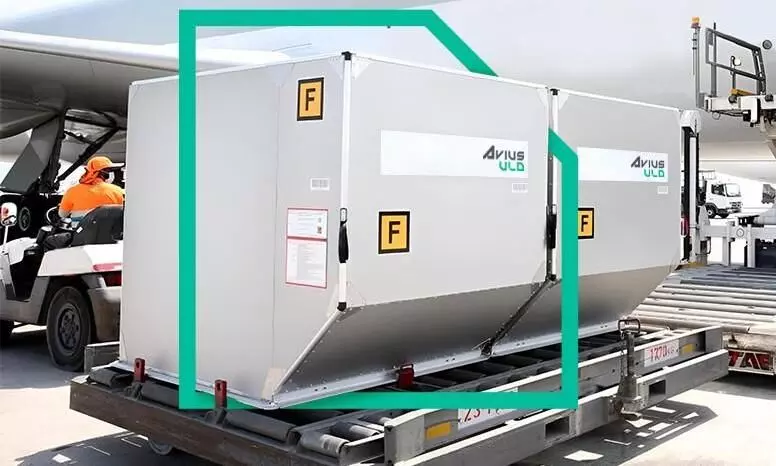
AviusULD assessment shows lighter ULDs cut lifetime emissions
The study compared the environmental impact of three ULDs using different panel materials: Aluminium, Herculight and Endumax.

AviusULD has released their latest Product Footprint assessment a — cradle-to-grave life cycle assessment showing that the weight of AKE unit load devices is the dominant factor influencing their carbon footprint.
Conducted by Ecomatters, the study compared the environmental impact of three AviusULD AKE ULDs using different panel materials: Aluminium, Herculight and Endumax.
They followed ISO 14040/44 standards, used the Ecoinvent 3.1 database, and drew data from material suppliers, manufacturing partners and logistics providers to quantify how lighter containers reduce fuel burn and emissions over their lifetime.
The assessment covered every stage of a container’s life — from raw material extraction and manufacturing to customer delivery, in-service use and final disposal. Based on raw data gathered from the entire supply chain, including material suppliers, manufacturing partners and logistics providers, the study was modelled using internationally recognised methods and conservative assumptions.
Results showed that more than 99% of emissions occur during the use phase, driven mainly by the fuel required to transport the ULD by air. Lighter containers consume less fuel, making weight reduction the most effective lever for lowering emissions.
Total cradle-to-grave results for AKE containers were:
- Endumax at 339,161 kg CO₂-eq
- Herculight at 358,843 kg CO₂-eq
- Aluminium at 421,411 kg CO₂-eq
On a per 10,000 km basis, Endumax emitted 451 kg CO₂, while Aluminium emitted 560 kg CO₂, marking a 20% reduction achieved through lower weight.
On a per-10,000 km basis, Endumax emits just 451 kg CO₂, compared to 560 kg for Aluminium – a 20% reduction that can scale significantly across a global fleet. Source: AviusULD
Even when excluding the in-service use phase, weight and material type remained the largest contributors to environmental impact. Raw material emissions for each were found to be:
- 712 kg CO₂-eq for Endumax
- 735 kg CO₂-eq for Herculight
- 938 kg CO₂-eq for Aluminium
Aluminium has the highest carbon footprint because producing primary aluminium requires significant energy. Although recyclability is promoted, its effect is minimal compared with emissions from use and raw material production.
With the industry under pressure to meet net zero targets by 2050, AviusULD said lighter, weight-optimised containers such as those made with Endumax panels can help airlines and cargo operators cut carbon emissions and improve payload potential. They can also support Scope 3 (value chain emissions) reporting, meet customer demands and prepare for potential carbon pricing pressures.

